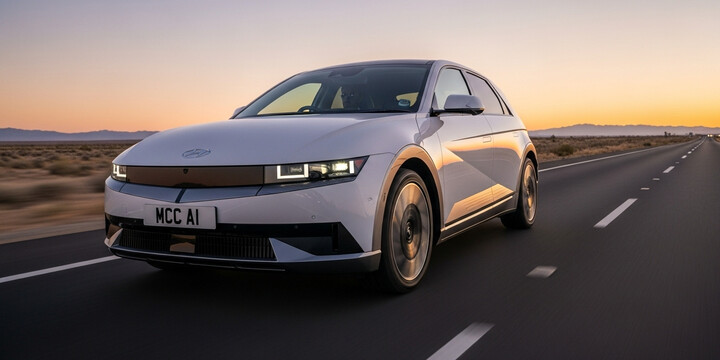
HYUNDAI IONIQ 5 (2024-) 5DR HATCHBACK 0.0 ELECTRIC 84KWH 228 ULTIMATE AUTO
The HYUNDAI IONIQ 5 (2024-) 5DR HATCHBACK 0.0 ELECTRIC 84KWH 228 ULTIMATE AUTO is a cutting-edge electric vehicle that stands out in the competitive UK market for its innovative design and eco-friendly features. As a compact hatchback, it combines practicality with a modern aesthetic, making it ideal for families, commuters, and those seeking a stylish, zero-emissions car. Its notable electric range, thanks to an 84kWh battery, offers impressive driving distances—perfect for daily use or longer journeys—while its advanced features provide a comfortable and premium driving experience.
What makes the IONIQ 5 especially appealing is its futuristic design, spacious interior, and high-quality build, all packed into a vehicle known for reliability and efficiency. It competing well against rivals in the electric hatchback segment, and its reputation for comfort and tech-savvy features makes it a popular choice for environmentally conscious drivers. With an average private sale value around £30,690 and a very low number of previous owners, the Hyundai IONIQ 5 (2024-) is a compelling option for those looking to embrace electric motoring in style and comfort. Whether you're a first-time EV buyer or upgrading from a traditional car, this model offers a future-proof, smart choice.

average use

The data indicates that all recorded vehicles of the Hyundai Ioniq 5 (2024 model) with the specified specifications have their most recent mileage readings within the 0 to 10,000 miles range, accounting for 100% of the sample. This suggests that these vehicles are relatively new or have low mileage, which could be a positive indicator of their condition and potential value.

vehicle values

The data on private sale valuations for the Hyundai Ioniq 5 (2024 model) indicates that the majority of vehicles are priced between £29,000 and £30,000, accounting for approximately 41.2% of the market. The next most common price range is £30,000 to £31,000, representing 23.5%. Collectively, these two ranges make up the bulk of the private sale prices, suggesting that this model's typical asking price is just under £30,000 to £31,000. Fewer vehicles are listed above £32,000, indicating a relatively tight market with limited higher-end listings, which may reflect the vehicle's depreciation curve or market demand at these price points.

production years

The data indicates that the majority of Hyundai Ioniq 5 models, specifically 58.8%, are manufactured in 2024, while a smaller proportion, 41.2%, are from 2025. This suggests that most vehicles of this model currently on the market are from the previous year, which is typical for newly released models as they tend to roll out gradually. The presence of some 2025 vehicles also points to ongoing production and availability into the new year.

colour popularity

The data indicates that the most common main paint colours for the Hyundai Ioniq 5 (2024 model) are Grey and Blue, each accounting for 52.9% and 17.6% respectively. Green and Blue are less prevalent, each comprising 17.6%, while Gold and Black are rare, making up only 5.9% each. Overall, grey is the dominant colour choice, suggesting a preference for neutral tones among owners of this model. The presence of green and blue also highlights a degree of driver interest in more vibrant or distinctive colours.

ownership cycle

The data indicates that the majority of Hyundai Ioniq 5 vehicles (around 82.4%) have just one registered keeper, suggesting that most owners tend to retain their vehicle for some time. A smaller portion (11.8%) have had two registered keepers, which may point to a moderate level of ownership changes. Additionally, approximately 5.9% of vehicles have no recorded registered keepers, which could indicate recent registration, data anomalies, or vehicles awaiting new ownership. Overall, the data reflects stable ownership patterns with minimal turnover.

engine choices

The data indicates that all surveyed vehicles of the Hyundai Ioniq 5 (2024-onwards) 5-dr hatchback model are electric, with 100% of the sample running on electric power. Notably, there is no available information regarding engine capacity, which is consistent with the vehicle's electric nature, as traditional engine capacity metrics are generally not applicable to electric vehicles. This highlights the electric model's distinct characteristics compared to traditional internal combustion engine vehicles.












